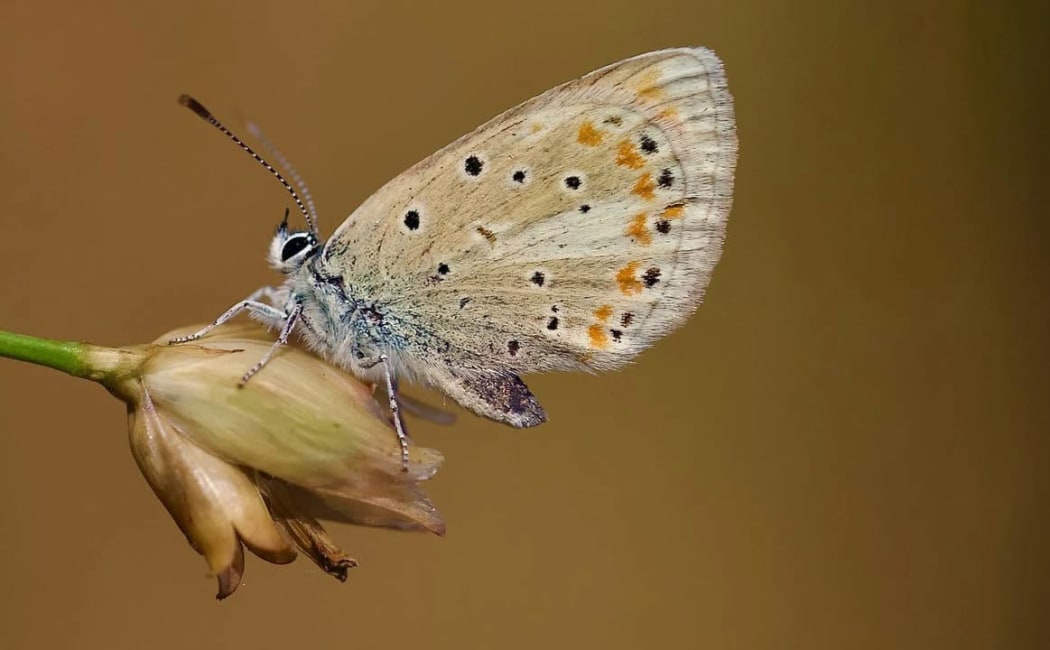Tiny Atlas Blue Butterfly Sets World Record with Highest Number of Chromosomes

In a groundbreaking discovery, scientists have confirmed that the Atlas blue butterfly (Polyommatus atlantica) has broken the world record for the most chromosomes in any multicellular animal. This tiny species, native to the rugged mountain ranges of Morocco and northeast Algeria, possesses an astonishing 229 pairs of chromosomes. For comparison, most closely related butterflies carry only 23 or 24 pairs.
Researchers at the Wellcome Sanger Institute and the Institute of Evolutionary Biology revealed that these extra chromosomes were not created through duplication but through gradual splitting and rearrangement over time. This unusual genetic structure opens new doors for understanding evolutionary biology, species formation, and genetic diversity.
Why This Discovery Matters
Chromosomal behavior is not just an academic subject; it has practical implications. Similar changes are seen in human cancer cells, meaning the Atlas blue butterfly genome could offer critical insights into how genetic material rearranges itself. This, in turn, could help medical researchers deepen their understanding of how cancer develops and spreads across different organisms.
The first detailed genomic study of this butterfly, published in Current Biology, provides what scientists describe as a “gold-standard reference genome.” With this high-quality genetic blueprint, researchers can now compare the butterfly’s extreme chromosomal count with those of other species to better understand how new species evolve and adapt in rapidly changing environments.
How Chromosomes Shape Evolution
For decades, biologists struggled to study chromosome-driven evolution in detail. Often, they compared the DNA of one species against others in the same family to approximate which traits were preserved or lost over time. Now, with complete sequencing of the Atlas blue butterfly genome, experts can directly observe how chromosome splitting influences adaptation, survival, and even the creation of entirely new species.
This tiny butterfly belongs to a group of species known for their rapid evolutionary changes. Its unusually high number of chromosomes may have given it an edge in surviving the challenges of its mountainous habitats. Genetic flexibility often contributes to resilience, allowing species to adapt quickly to climate change and shifting ecosystems.
Climate Change Threatens a Genetic Marvel
Despite its remarkable genetic record, the Atlas blue butterfly is increasingly threatened by climate change. Rising global temperatures and shifting weather patterns affect the fragile mountain ecosystems in which it thrives. With its limited geographic distribution, even minor changes in climate can pose a risk to its survival. Scientists warn that protecting this butterfly is not just about conserving biodiversity but also about preserving a unique genetic treasure that could inform future medical and evolutionary research.
Stimulating New Questions in Genetics
The discovery of this record-breaking chromosome count raises several fascinating questions. Why does splitting chromosomes benefit some species? Does it improve survival by allowing genetic parts to rearrange more flexibly? Or could it provide unknown evolutionary advantages that science has yet to uncover?
Comparative studies will be vital in answering these questions. By examining whether specific genes are preserved across related butterfly species, scientists hope to identify patterns that reveal the true role of chromosome fragmentation in evolution. These findings could help explain how biodiversity develops and why some species adapt more rapidly than others.
Voices from the Research
Professor Mark Blaxter of the Wellcome Sanger Institute emphasized the broader importance of the study, saying: “Genomes hold the key to how a species originates and how it might evolve in the future. To truly understand the story of life on our planet, we need to piece together the genetic story of each species and see how they connect. The Atlas blue butterfly is a vital part of this larger puzzle.”
Conclusion: A Tiny Butterfly with a Giant Legacy
The Atlas blue butterfly may be small in size, but it carries one of the most extraordinary genetic signatures ever discovered. With 229 pairs of chromosomes, it stands as a record-holder in the animal kingdom. Beyond its world record, this butterfly’s genome is a window into evolutionary biology, a potential key to understanding human disease, and a reminder of how fragile our natural world is in the face of climate change.
As researchers continue to unlock the secrets hidden within its DNA, the Atlas blue butterfly proves that even the tiniest creatures can carry enormous scientific importance. Protecting this butterfly means safeguarding a critical piece of the evolutionary story of life on Earth.
